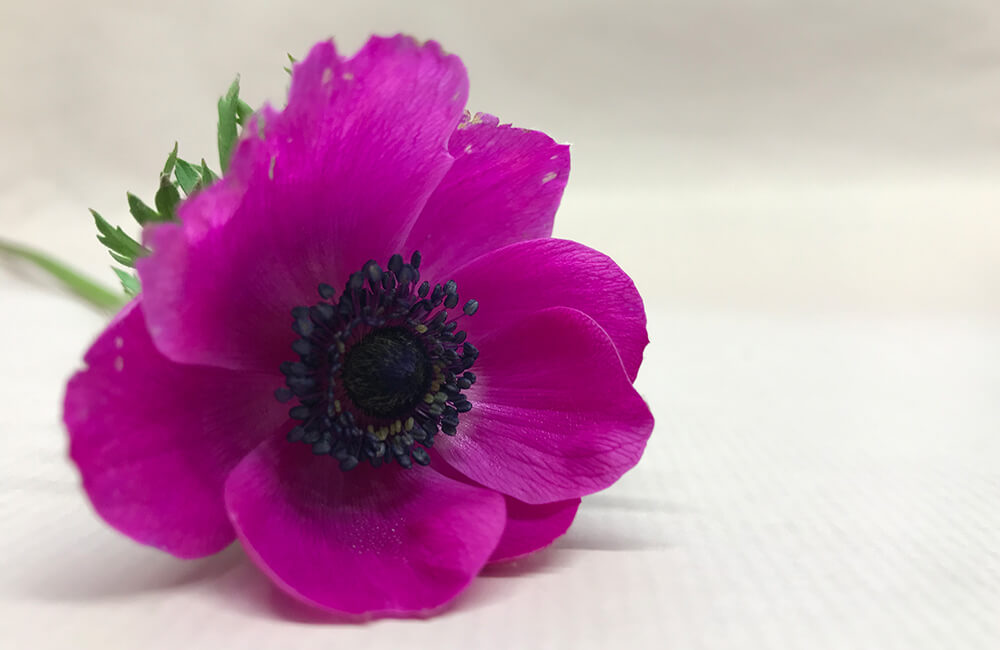Before the shop is filled wall-to-wall with Valentines roses, I’d like to give a bit of airtime to another beautiful flower that’s in season at the moment – Anemones.
A shy, and unassuming flower in pale colour varieties, it can also make a statement in brighter colours. In fact, D.H. Lawrence went so far as to describe “scarlet anemones flaunting over the table” in his novel ‘Sons and Lovers’. So you might say they can be positively raunchy to some eyes.
Anemones as a cut flower are available on the flowers markets over the winter and into spring, from October to April. When they arrive in the shop the petals are curled coyly in on themselves and very gradually they open up to reveal their placid little faces.

Something about the simplicity of their shape gives anemones their charm. Their rounded petals radiating from perfectly circular centres fits the image of the flower you drew as a child.
But to prove they have more depth to them, here are five facts you may or may not know about Anemones.
- Anemones are also known as wind flowers. The name derives from the greek meaning ‘daughter of wind’ (ánemos, greek for ‘wind’ and -ṓnē, greek for ‘daughter of’.)
- Anemones have their own creation story in Greek mythology. As the goddess Aphrodite wept over the body of her dead lover Adonis, her tears mixed with his blood and gave rise to an Anemone flower.
- In the Victorian language of flowers, anemones mean forsaken love.
- Anemones were a favourite of the French artist Henri Matisse. Many of his paintings feature Anemones including ‘Vase of Anemones’, ‘Woman with Anemones’, ‘Anemones and Peach Blossoms’, ‘Anemones and Black Mirror’, ‘Purple Robe and Anemones’ and ‘Annelies, White Tulips and Anemones’.
- The Anemone species you will commonly see in a florist shop is Anemone coronaria – the species name coming from the word corona which is latin for ‘crown’ and also describes the gaseous glow that surrounds the sun, best seen emerging from behind the dark circle of the moon at a solar eclipse. This image fits perfectly with the shape and form of the flower – the petals being the sun’s pearly glow and the flower’s circular centre, the moon.



Recent Comments